Modern design brings clean lines, intentional spaces, and thoughtful elements together to create homes that feel both fresh and timeless.
Achieving this look isn’t about spending fortunes on designer furniture—it’s about understanding core principles that guide every decision from wall color to bookshelf arrangement. Ready to transform your space from cluttered to curated? These essential rules will guide your modern design journey.
1. Negative Space Is Sacred
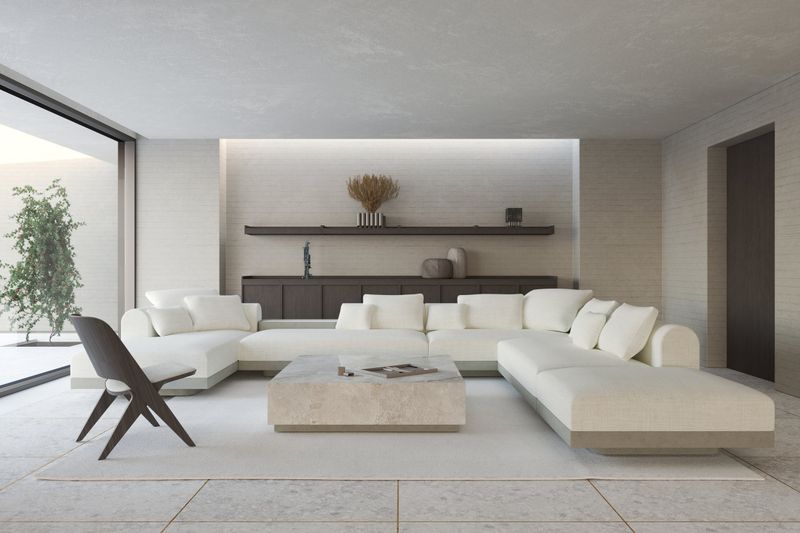
Empty space isn’t wasted—it’s precisely where design breathes. Allow furniture to float away from walls, creating islands of purpose with room to circulate freely around them.
Resist the urge to fill every corner. When in doubt, remove something rather than adding more. The most sophisticated rooms know exactly when to stop talking.
2. Form Follows Function
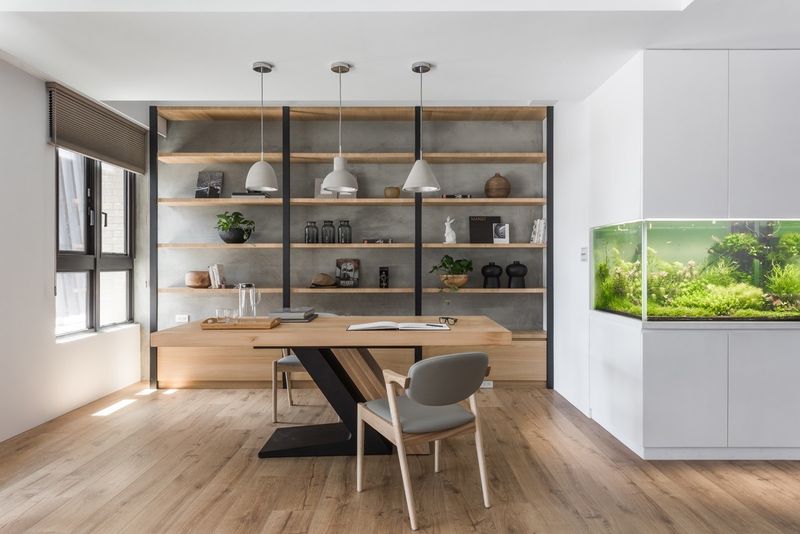
Beautiful objects that serve no purpose quickly become expensive dust collectors. Start with what a room needs to accomplish, then select pieces that perform those functions elegantly.
A reading nook demands proper lighting before decorative pillows. Kitchen counters require uninterrupted workspace before artisanal ceramics. Functionality creates the skeleton that aesthetic flesh adorns.
3. Curate a Cohesive Color Story
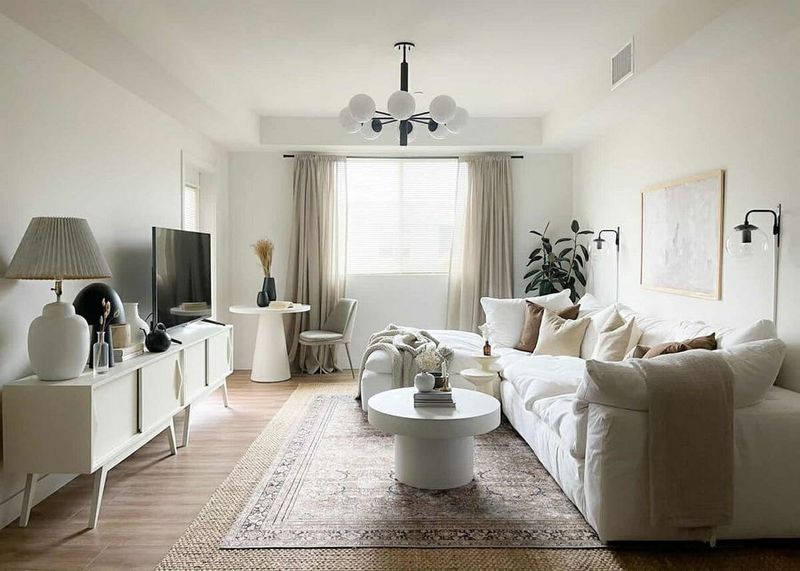
Modern palettes don’t scream—they whisper with authority. Build around three core colors: a neutral base, a secondary tone, and one accent that appears sparingly.
Paint walls the lightest shade in your palette to create a canvas. Let furniture introduce middle tones. Reserve the boldest color for small moments that draw the eye exactly where you want attention.
4. Quality Over Quantity
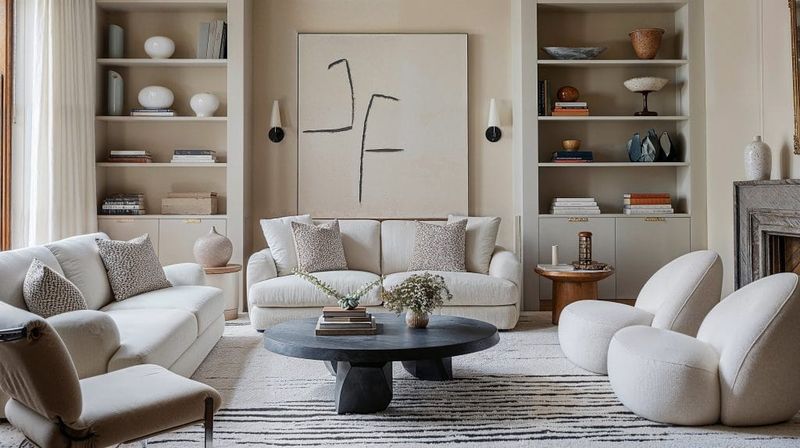
Modern design celebrates fewer, better things. One exquisite chair makes more impact than three mediocre ones crowding a corner.
Save aggressively for statement pieces that make your heart race. A single hand-crafted dining table outlives five disposable ones, both physically and stylistically. Investment pieces become the backbone around which less expensive elements can orbit.
5. Natural Light Reigns Supreme

Windows aren’t just architectural elements—they’re mood-makers. Remove heavy drapes that suffocate light flow and replace with simple panels that frame views without blocking them.
Arrange furniture to capitalize on natural light patterns throughout the day. Mirrors strategically placed opposite windows multiply brightness, creating the spacious, airy feeling that defines modern interiors.
6. Embrace Material Contrast
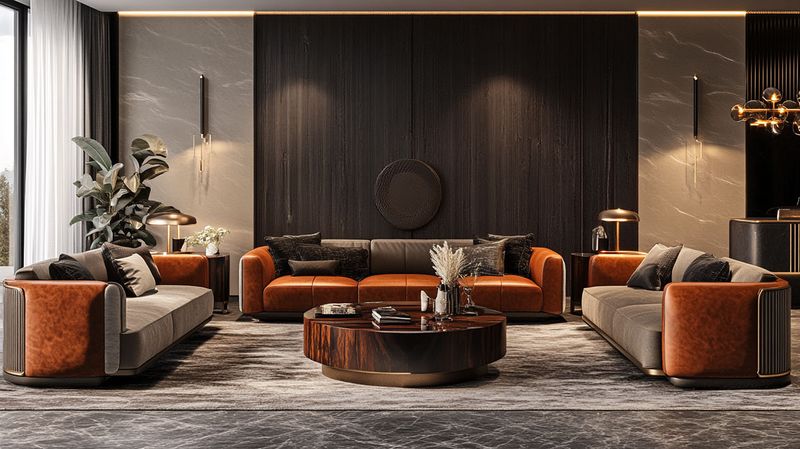
Texture creates conversation between elements. Mix smooth against rough, matte against glossy, hard against soft—these juxtapositions prevent modern spaces from feeling sterile.
A leather sofa needs linen pillows. Glass tables beg for woven baskets nearby. Concrete walls call for velvet curtains. Without these material dialogues, spaces feel flat rather than rich with intentional complexity.
7. Architectural Lines Define Spaces
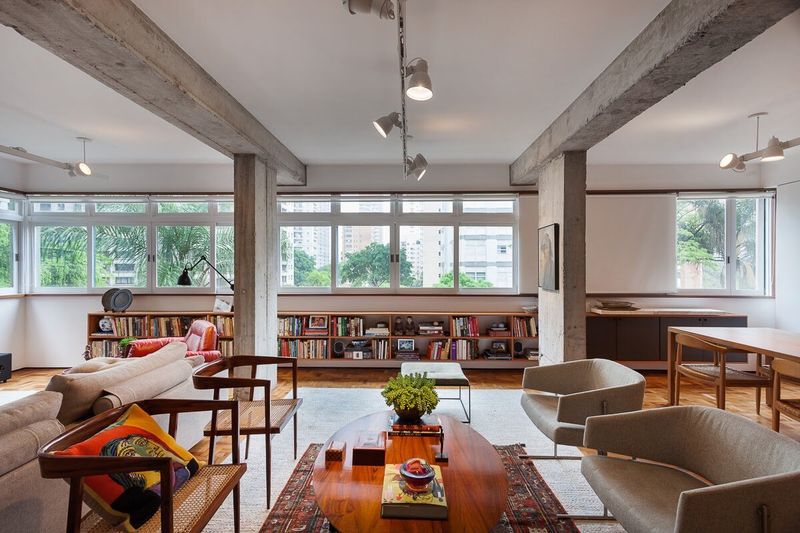
Modern design celebrates a room’s bones instead of hiding them. Expose structural elements like beams or columns rather than concealing architectural features behind decorative distractions.
Furniture should echo architectural lines, creating visual harmony. A room with strong horizontal elements feels most balanced when major furniture pieces reinforce that same directional energy rather than fighting against it.
8. Neutral Doesn’t Mean Boring
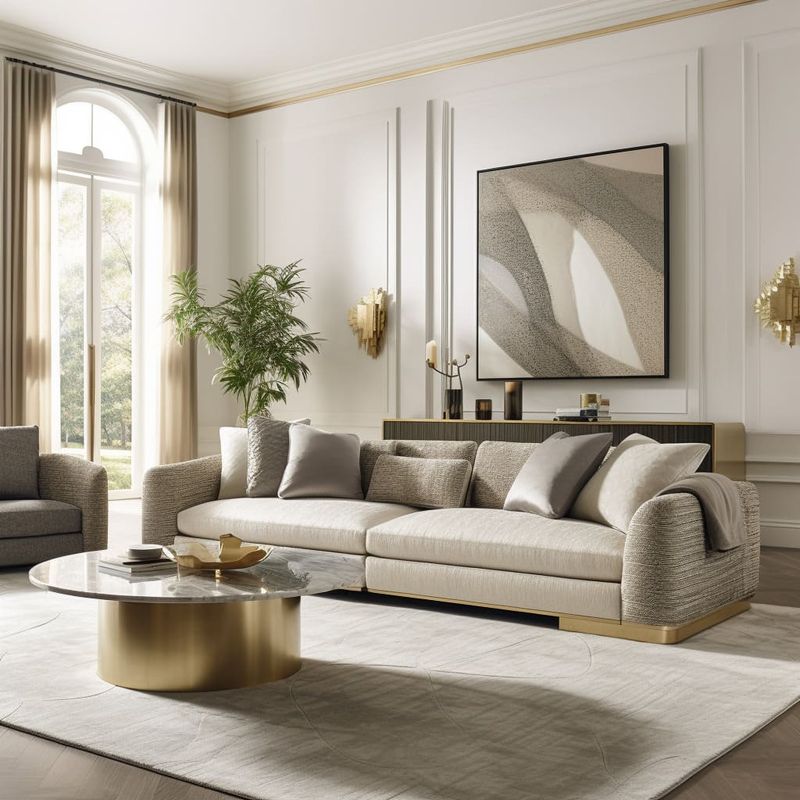
Whites, grays, and taupes create sophisticated backdrops that never tire the eye. The secret lies in varying undertones and textures within your neutral palette.
Layer cream wool against oatmeal linen against chalk-white walls. Each shade carries subtle temperature differences that create depth. Modern neutrals aren’t flat—they’re complex canvases that shift with changing light throughout the day.
9. Edit Ruthlessly
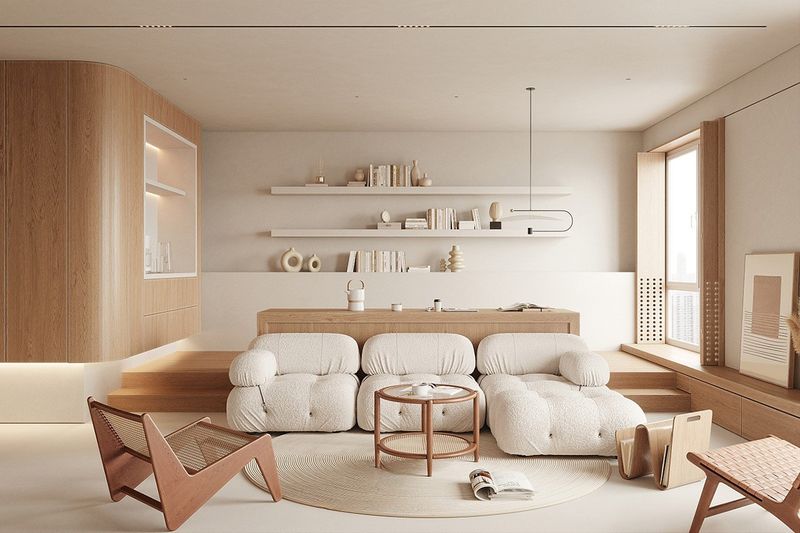
Modern spaces demand regular purging. Establish a one-in-one-out policy for new acquisitions to prevent accumulation that dilutes design impact.
Ask three questions before any object earns permanent residence: Does it serve a purpose? Does it bring genuine joy? Does it enhance the overall aesthetic? Anything scoring less than three affirmative answers belongs elsewhere.
10. Books Belong Everywhere
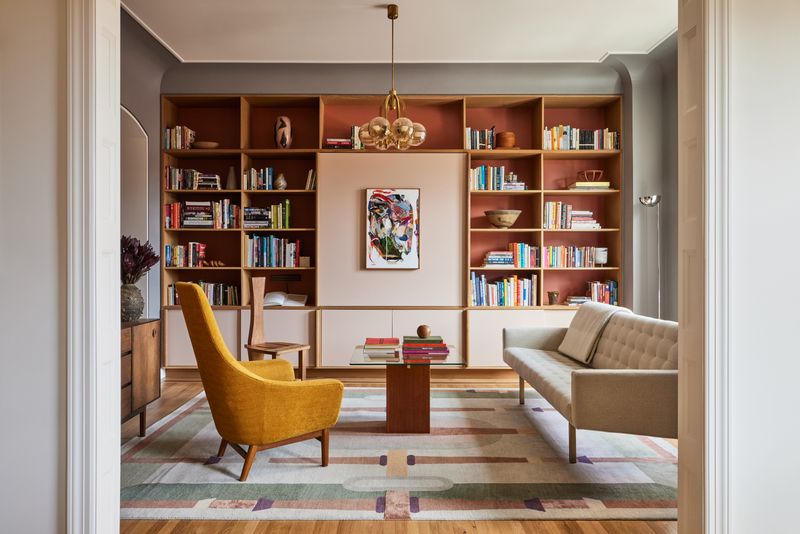
Libraries aren’t rooms—they’re distributed intellectual landscapes throughout modern homes. Stack art books horizontally as pedestals for small objects.
Remove paper jackets to reveal spine colors that complement your palette. Alternate vertical and horizontal arrangements on shelves to create rhythm. Books provide personal narrative in otherwise minimal spaces, revealing mind behind the design.
11. Scale Makes Statements

Proportion creates emotional impact. One oversized painting commands more attention than a gallery wall of smaller pieces.
Modern spaces thrive on scale contrast—pair substantial sofas with delicate side tables, or slender chairs with massive coffee tables. Avoid medium-everything syndrome where nothing stands out because everything occupies the same visual weight class.
12. Technology Should Disappear
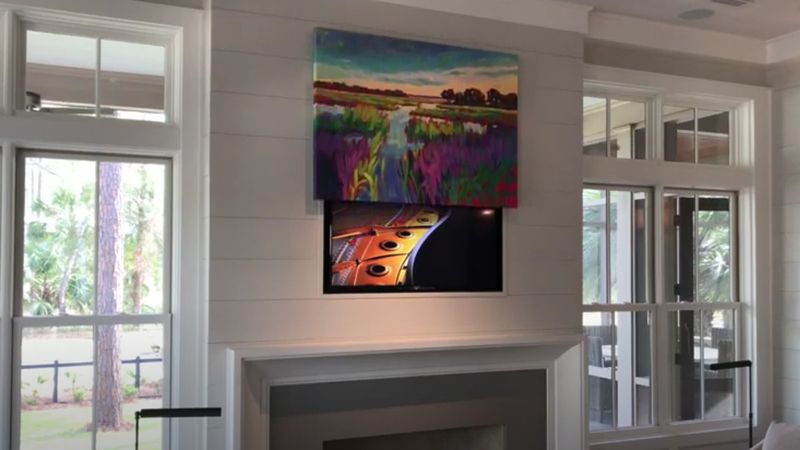
Modern spaces celebrate human connection, not black screens. Conceal televisions behind sliding panels or artwork. Banish visible cords through clever routing solutions.
Designate charging stations inside drawers rather than cluttering surfaces with device graveyards. Smart home elements should integrate invisibly, controlling environments without announcing their presence. Technology serves life without dominating visual attention.
13. Invest in Transitions
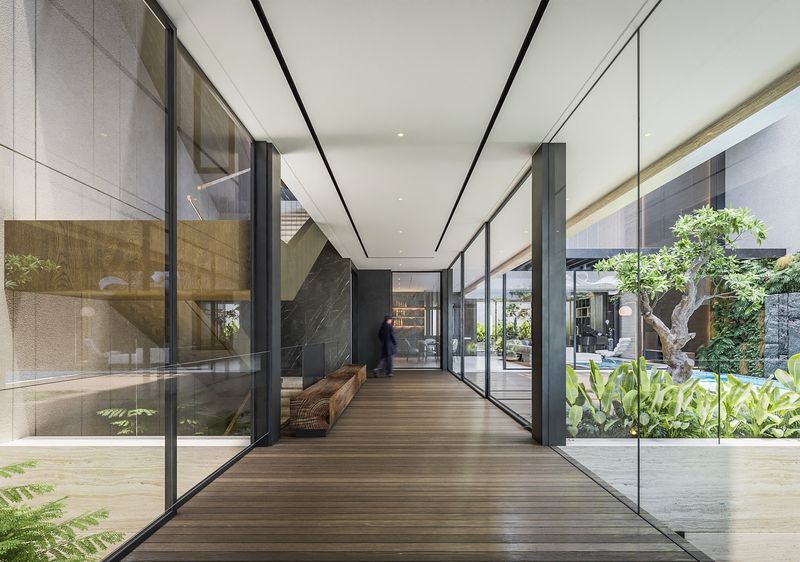
Doorways and hallways aren’t merely connective tissue—they’re experiential pathways deserving intentional design. Consider how spaces reveal themselves sequentially as people move through your home.
Create moments of compression before expansion. A narrow hallway makes the room it opens into feel more dramatically spacious. These transitional moments build anticipation and rhythm through contrasting spatial experiences.
14. Personal Objects Need Breathing Room
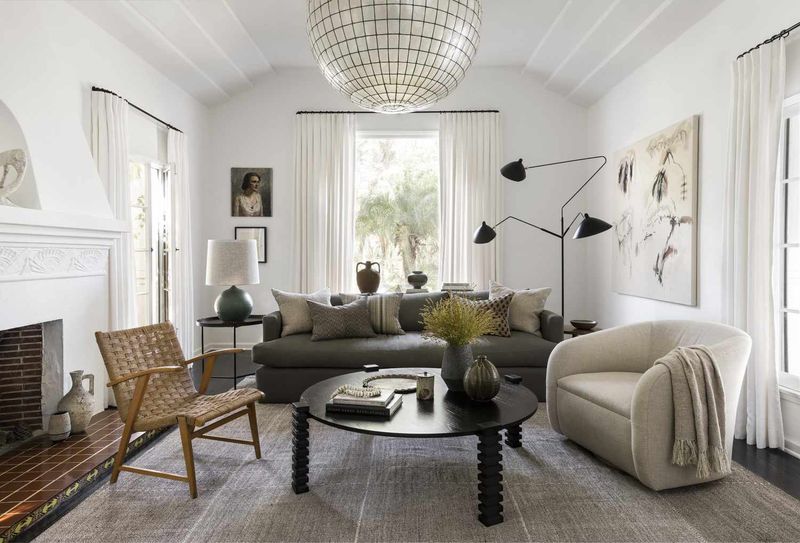
Meaningful items lose impact when crowded together. Display treasured pieces with museum-like reverence—isolated, properly lit, and given visual space to command attention.
Rotate collections seasonally rather than displaying everything simultaneously. Groups of similar objects create stronger impact than scattered individual pieces. Remember that empty space around cherished items frames their importance.

